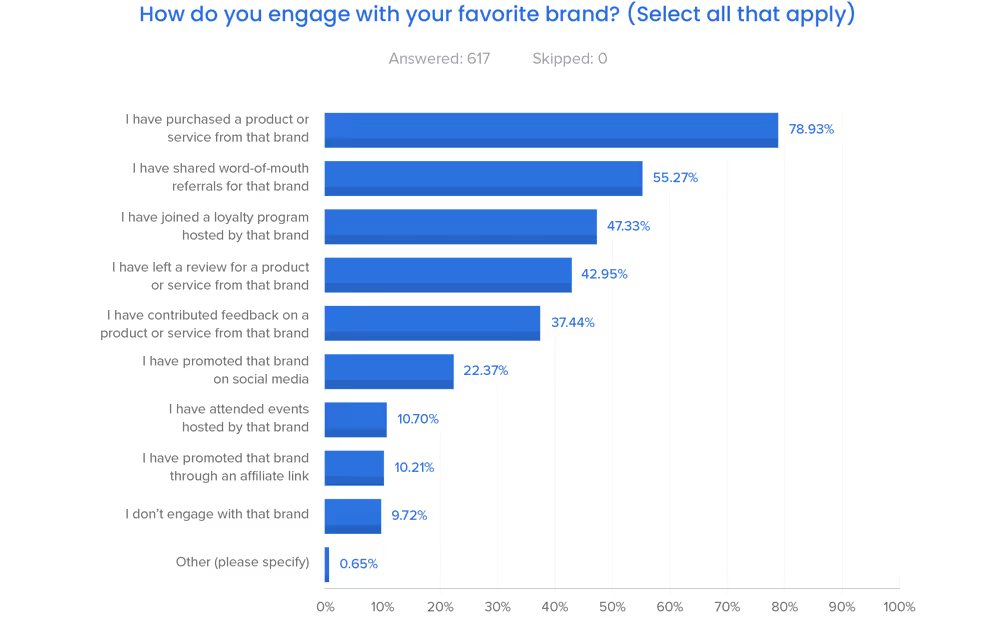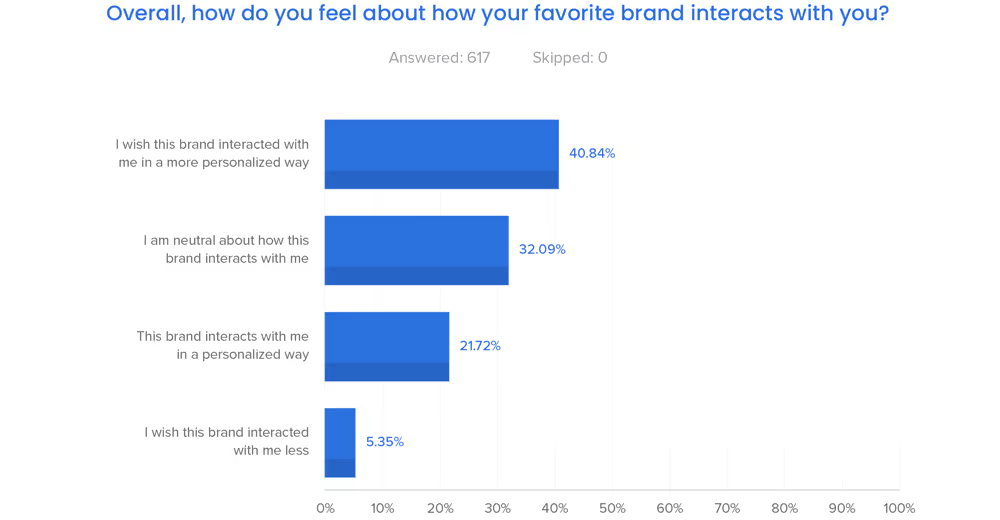7 brand community trends that make you a smarter marketer

“Brand communities” is the buzzphrase everyone is talking about right now.
Don’t believe us? Here are some headlines from recent weeks:
- Your brand's real offering to Gen Z is community
- Zoom emerges as a community platform for beauty brands
- Community during coronavirus: how the alcohol industry builds connections
Brand communities, or groups of like-minded individuals who share an identity and purpose that the brand empowers them to express, are more important than ever. So given that every brand is looking to their community to thrive, our mission is to arm you with the data you need to make your community successful.
To do so, we went right to the source, surveying 617 consumers and 155 brands. Perhaps unsurprisingly, consumers and brands had different perspectives of communities. Our takeaways: consumers want to be a part of brand communities. Brands, however, have some key areas for improvement.
Here are 7 stats to help you rise above the competition. To get more, download the full report.
1. Over 90% of customers engage with their favorite brand.
Data shows that consumers are incredibly engaged when it comes to interacting with brands. Over 90% of consumers reported engaging with their favorite brand in some capacity. While consumers do one very obvious thing — make purchases, as indicated by nearly 80% of recipients here — consumer value goes beyond one-off checkouts.
What other activities can consumers do? Here, consumers also reported sharing word-of-mouth referrals, joining loyalty programs, leaving reviews for products and services — the list goes on.

2. But over ⅔ of people surveyed don’t feel like they have a say in their favorite brand.
Contributing to a brand could mean many things. Posting a photo of a brand’s product on your social channels or beta testing a new product are both examples. So we asked consumers if they felt like they could contribute to a brand — via their story, content, product, or service.
Over 2/3 of consumers replied no. But half of those who said no were eager for the chance to contribute more to a brand, illustrating the value of brands who co-create their stories alongside consumers and give them a say into how the brand is molded.

3. And only ~20% of people say their favorite brand interacts with them in a personalized way.
When asked how consumers feel about how their favorite brand interacts with them, nearly half of respondents cited room for improvement. 40.84% wanted brands to personalize their interactions more and 5.35% even wished the brand interacted with them less. Only 21.72% of people said the brand was doing a good job of interacting with them in a personalized way, and the remaining third respondents were neutral.

4. Brands are focusing on the wrong channels.
The problems with personalization may come down to communication. Data also shows many brands communicate through channels like emails and direct mail, whereas consumers are more interested in other actions.
We asked consumers how their favorite brands communicate with them — then we asked how they wanted brands to communicate instead. Many brands primarily communicate through actions like email and direct mail, which may make consumers feel as if they’re on the other end of generic mass blast, where they’re being shouted at or sold to. Instead, consumers want to be part of mutual interactions, with nearly half of respondents wishing brands would invite them to test new products and services, and about a quarter of consumers each wishing brands would engage with their social mentions and invite them to events.
Two-way conversations between brands and consumers are essential for making consumers feel valued, and building true and lasting connections.
5. 70.4% of brands already have an active community.
Looking at the consumer data, there’s definite opportunity for growth.
The good news: Brands are taking community seriously in the year ahead. 70.41% of brands already have an active community, and another 26.3% express the desire to build a community soon. Only 3.29% of brands do not have a community and do not plan on building one.
One thing is clear: brand communities are the future.

6. 92.3% of brands report that community has positively impacted their brand.
There’s no doubt among brands that communities are important for hitting business goals. The strong majority of respondents — 92.26% — say that community has positively impacted their brand.
What’s more, when we asked how important community is to brands on a scale of 1-10, the average answer was over 9.
There are lots of ways communities can help brands at every step of the funnel. It can:
- Aid brand awareness
- Increase sales
- Foster customer loyalty
- Boost word-of-mouth referrals
- And generally deepen customer relationships leading to a range of benefits

7. And the average answer to how important community is to a brand — on a scale from 1-10 — is 9.
Brands feel strongly about investing in their communities. We look forward to seeing over the next year how community activity and engagement grow. In our current climate, branding’s importance has certainly increased, and making consumers feel an emotional connection to your brand is more essential than ever.

Want more data? We have tons more stats to fuel your community strategy. Check out the infographic below and download the full report here.
